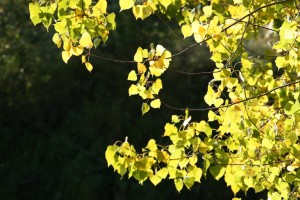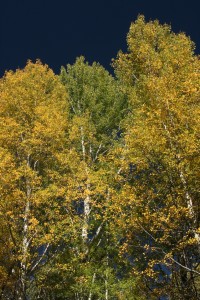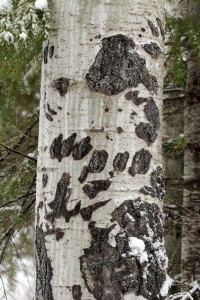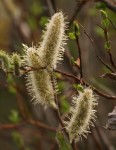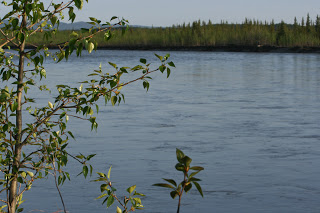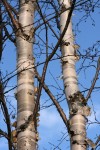One of my favorite sounds is the rustling of aspen leaves in the wind. While most leaves are attached to branches with round stems, quaking aspen have a flat stem that causes the leaf to tremble in the slightest breeze.
An added bonus is that aspen trees aren’t usually found by themselves but in groves. So when the leaves tremble, there is a pleasant sound all-around.
Quaking aspen are found in groves for a reason: they mainly propagate through their root system. This process is rare among trees. Each grove of trees is usually one organism, unless there are multiple colonies within one grove. Lateral roots extend out from the trees with each root having thousands of budding sites (as many as 400,000 to one million shoots per acre). When one of the trees is injured or killed, then the buds are encouraged to start growing.
This interconnectedness is evident in autumn when the leaves turn yellow. All the trees in a colony turn color at the same time since they are a single organism. The varying color stages of aspen in autumn shows which trees in a grove are connected.
One of the disadvantages of all the trees in a colony being a single organism is reproduction by seed. Aspen have male and female catkins on separate trees. Therefore, an entire colony will either be male or female. If there is no nearby grove of the opposite sex, then pollination is inhibited.
If pollination does occur, the odds of germination are slim. The seeds are viable for less than four weeks because they lack a stored food source and protective coating. If a seed lands in a moist area and germinates, it then has to survive the voracious grazing of elk and deer.
Obviously, some seeds do survive all the obstacles because quaking aspen are the most widely distributed tree in North America.
Many animals depend on aspen groves because of their rich plant diversity. Aspen allow sunlight to filter to the forest floor which in turn allows an understory of vegetation to grow.
Birds flock to aspen groves for the insects, seeds and berries found in the understory. Ruffed grouse feed extensively on the aspen leaves and buds. Meanwhile, deer, elk, moose, snowshoe hares, porcupines and beavers feast on the aspen leaves, twigs and bark.
Aspen is sought after in the winter because the twigs and bark are highly nutritious, accessible in the snow and have higher protein levels compared to other trees.
The desirability comes from the white outer layer actually being the living phloem layer that is also capable of photosynthesis. Usually the phloem layer is protected by a layer of bark.
With the phloem layer on the outside of the tree, any wounds to the tree are clearly visible, including bear scratches, spots where branches have naturally self-pruned or spots where people have carved their initials.
Wounds are visible until the tree dies but even though the individual tree dies, the colony survives. As new trees sprout from the roots, the slightest breeze continues to tremble the leaves much to my delight.

